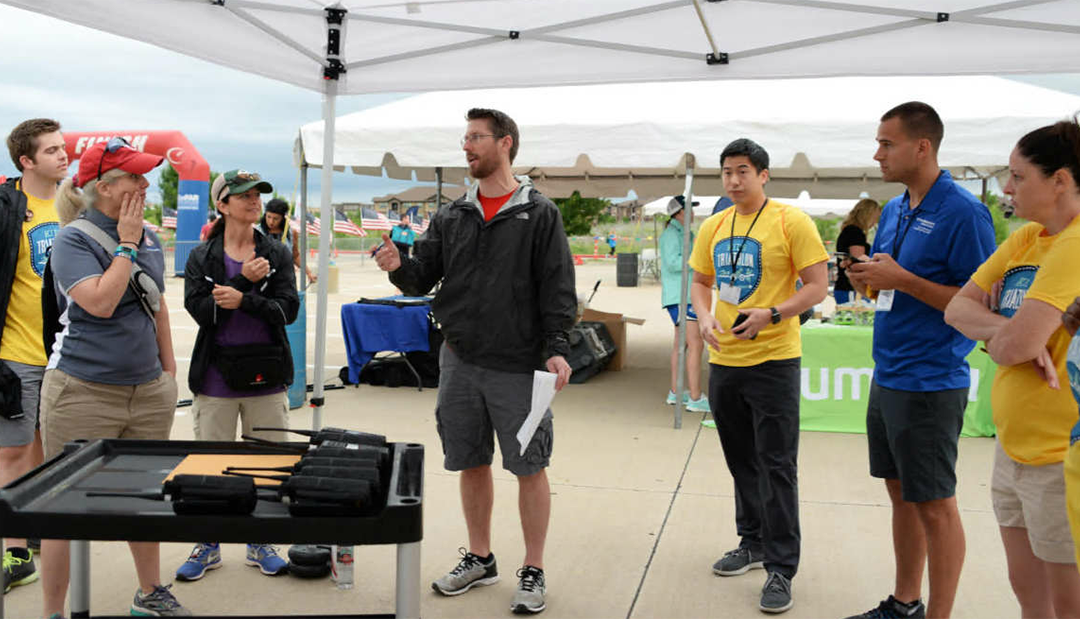
Emergency Action Plan: Why It Is Important For Your Child’s Sports Organization To Have One
Miller’s expertise and experience as a sports medicine physician, team doctor, former firefighter and emergency medical technician and, as a parent and coach of his kids’ teams, together give him perspective in this conversation. He says, “Responding to emergency calls is very different at a school or venue that has an EAP in place vs. others where chaos can cause delays in accessing emergency medical care.”
What is an EAP?
It is a comprehensive detailed written plan that prepares for medical, environmental and security emergencies. It is developed and coordinated with local EMS, venue officials, medical personnel and organization administrators.
Why do you need one?
Fortunately, the majority of injuries we see in our sports medicine practices are relatively minor. Musculoskeletal injuries like ankle sprains and fractures or overuse injuries such as knee pain or stress fracture are more common, but catastrophic injuries and emergencies do occur. These may include cardiac events, severe neck or spinal cord injuries and exertional heat stroke.
What is covered in an EAP?
EMERGENCY TEAM Who is involved when the plan is activated and what role each plays. This may include leaders in the organization (director/administrator), athletic trainer, team physician, etc. IT also addresses the training requirements for those roles – CPR, AED, first aid, concussion recognition or management. If no medical personnel present, who takes charge?
EMERGENCY EQUIPMENT, STATUS AND LOCATION
For example, an automatic external defibrillator is only helpful if it is easy to find, charged, stocked with appropriate pads and readily accessible. Make sure personnel or attendees know where to find first aid supplies or a STOP THE BLEED® kit.
COMMUNICATION Organized contact information for local emergency response systems including “9-1-1” and the address of the facility improves response time for calls. Additionally, a plan should include important people to contact in case of an emergency (athletes’ emergency contacts (parents), leaders of organization, medical team, etc..
MAPS Finding an injured athlete quickly requires access to venue-specific information including address, directions, maps, field numbers, location of gates and locks/keys, access points for emergency responders.
ROLES OF FIRST RESPONDERS Clearly defined personnel roles who provide first aid, equipment access and retrieval, calling EMS, directing EMS to the scene, removing equipment etc.
TRANSPORT PLAN Local emergency facilities may or may not accept traumatic injuries. Collaborate with local EMS to decide and communicate where an injured athlete will be taken and how.
DOCUMENTATION Record-keeping plans for all emergencies and near-emergencies and debrief discussions and findings. This helps with clearly documenting what occurred and provides information to help improve for the future.
Making youth sports a safe experience is on the minds of many health care professionals, parents and coaches. An EAP is not a new idea, but unfortunately, may be new to some organizations. Don’t hesitate to speak up for safety and share these ideas with your children’s sports organizations.
Listen to a recording of the podcast hosted by Miller’s peer, Mark Halstead, M.D.
Need some more information? Check out these resources:
- The Inter-Association Task Force Document on Emergency Health and Safety: Best-Practice Recommendations for Youth Sports Leagues I Learn more
- National Athletic Trainers’ Association Position Statement: Emergency Planning in Athletics I Learn more
- USA Recognize to Recover I Learn more
